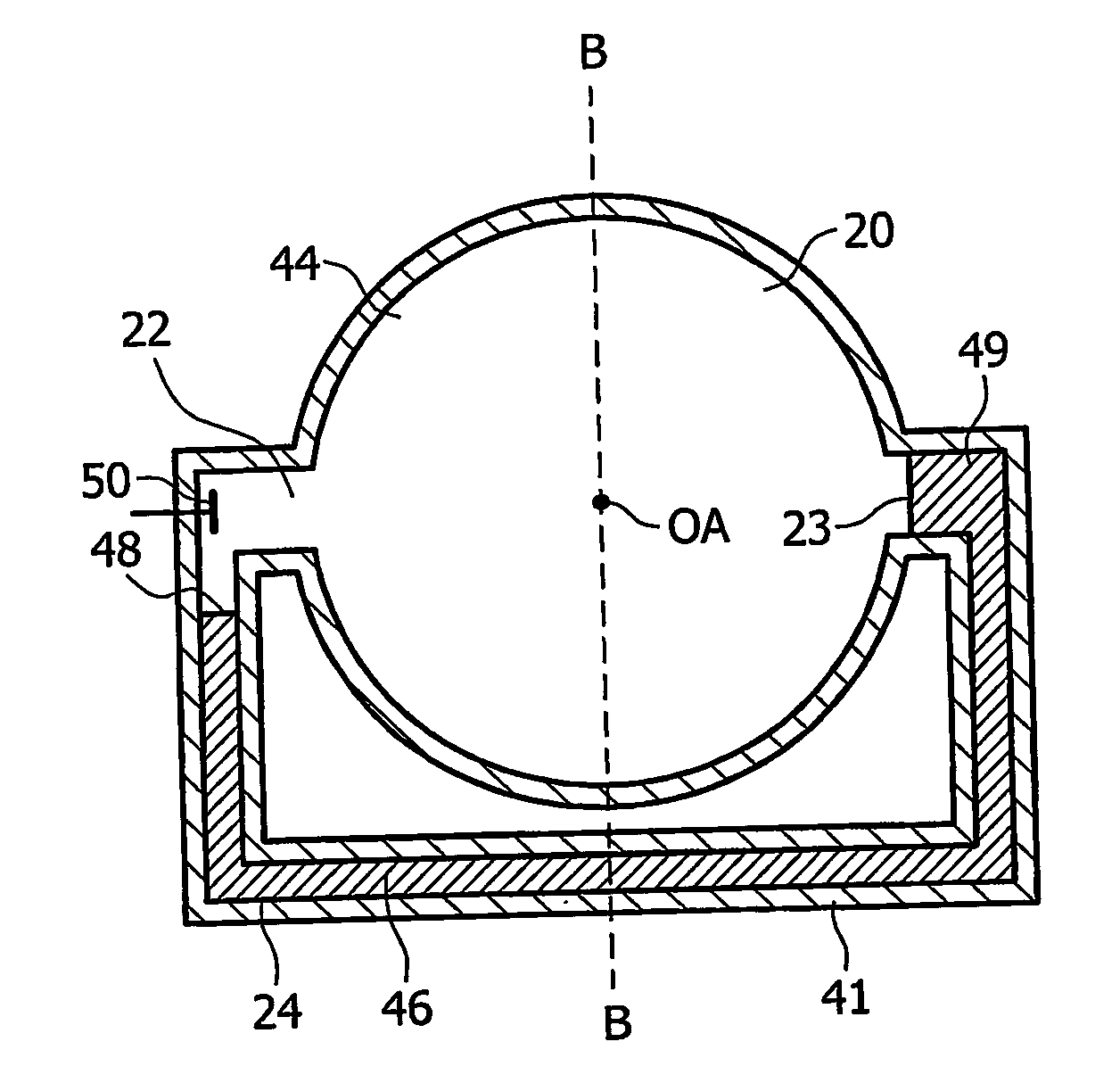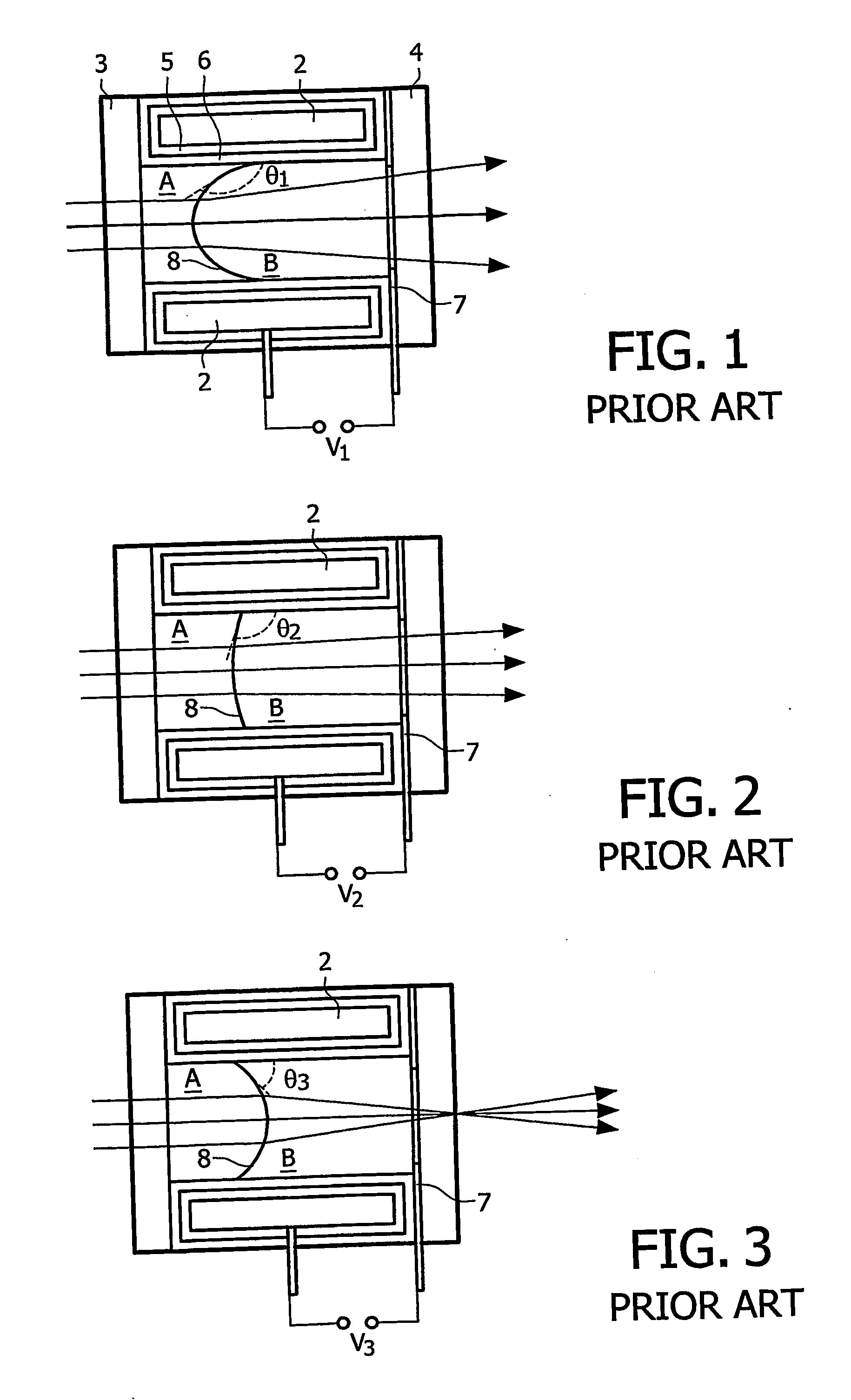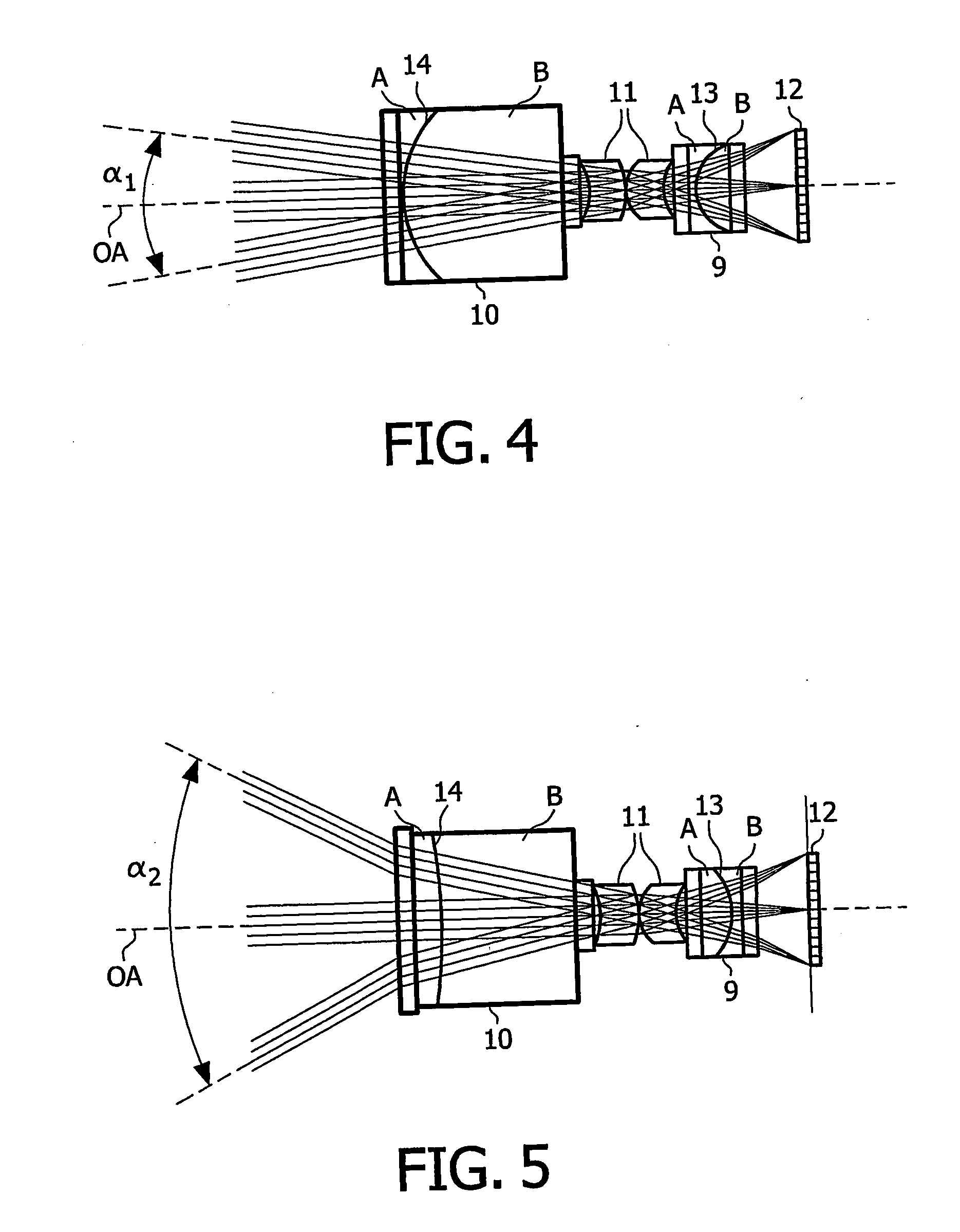Zoom optical system
a technology of optical system and zoom factor, applied in the field of zoom optical system, can solve the problems of lack of robustness, large volume of this type of optical system, and high cost of methods,
- Summary
- Abstract
- Description
- Claims
- Application Information
AI Technical Summary
Benefits of technology
Problems solved by technology
Method used
Image
Examples
Embodiment Construction
)
[0035] FIGS. 1 to 3 show, in accordance with the prior art, a variable focus lens which is a fluid meniscus lens comprising a cylindrical first meniscus electrode 2 forming a capillary tube, sealed by means of a transparent front element 3 and a transparent back element 4 to form a fluid chamber containing two different fluids. The first meniscus electrode 2 may be a conducting coating applied on the inner wall of a tube.
[0036] The two different fluids consist of two non-miscible liquids in the form of an electrically insulating first liquid A, such as a silicone oil or an alkane, referred to herein further as “the oil”, and an electrically conducting second liquid B, such as water containing a salt solution. The two liquids are preferably arranged to have an equal density, so that the shape of the meniscus can be controlled independently of orientation, i.e. without dependence on gravitational effects between the two liquids. This may be achieved by appropriate selection of the f...
PUM
 Login to View More
Login to View More Abstract
Description
Claims
Application Information
 Login to View More
Login to View More - R&D
- Intellectual Property
- Life Sciences
- Materials
- Tech Scout
- Unparalleled Data Quality
- Higher Quality Content
- 60% Fewer Hallucinations
Browse by: Latest US Patents, China's latest patents, Technical Efficacy Thesaurus, Application Domain, Technology Topic, Popular Technical Reports.
© 2025 PatSnap. All rights reserved.Legal|Privacy policy|Modern Slavery Act Transparency Statement|Sitemap|About US| Contact US: help@patsnap.com



